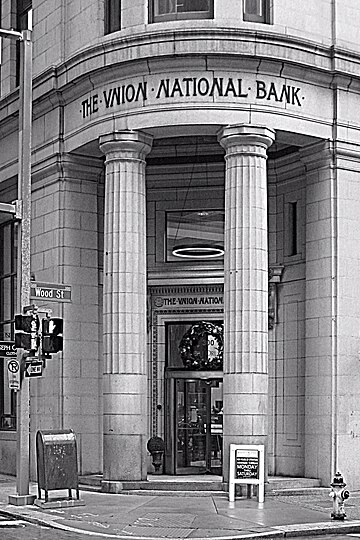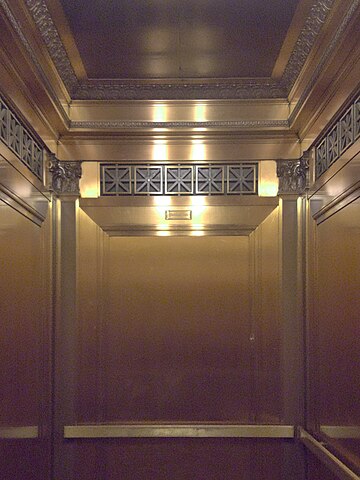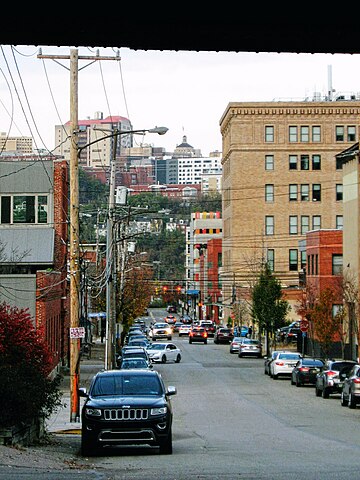
A splendid banking hall with façades by Frederick Osterling. The Wood Street one above is one of his late works, from 1926. Many of the banks along Fourth Avenue went for height, building some of the first skyscrapers; the Colonial Trust Company went for length. Its main hall extends all the way through from Fourth to Forbes, with elaborate façades at both ends; it later extended a perpendicular arm to Wood Street. Below, the Fourth Avenue façade from 1902, also by Osterling. We can see how much his ideas of classical architecture had changed in 24 years. In 1902 he chose the Corinthian order and elaborated it with every kind of ornament of which classical architecture is capable; in 1926 he chose the Ionic order and kept the ornamentation to a minimum.















